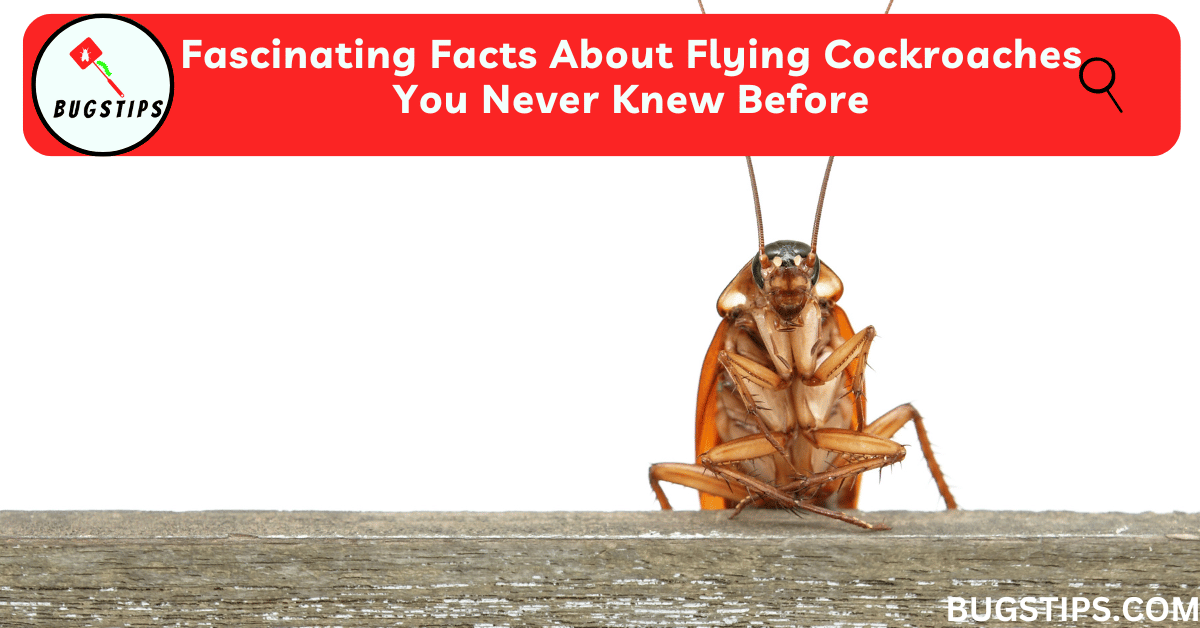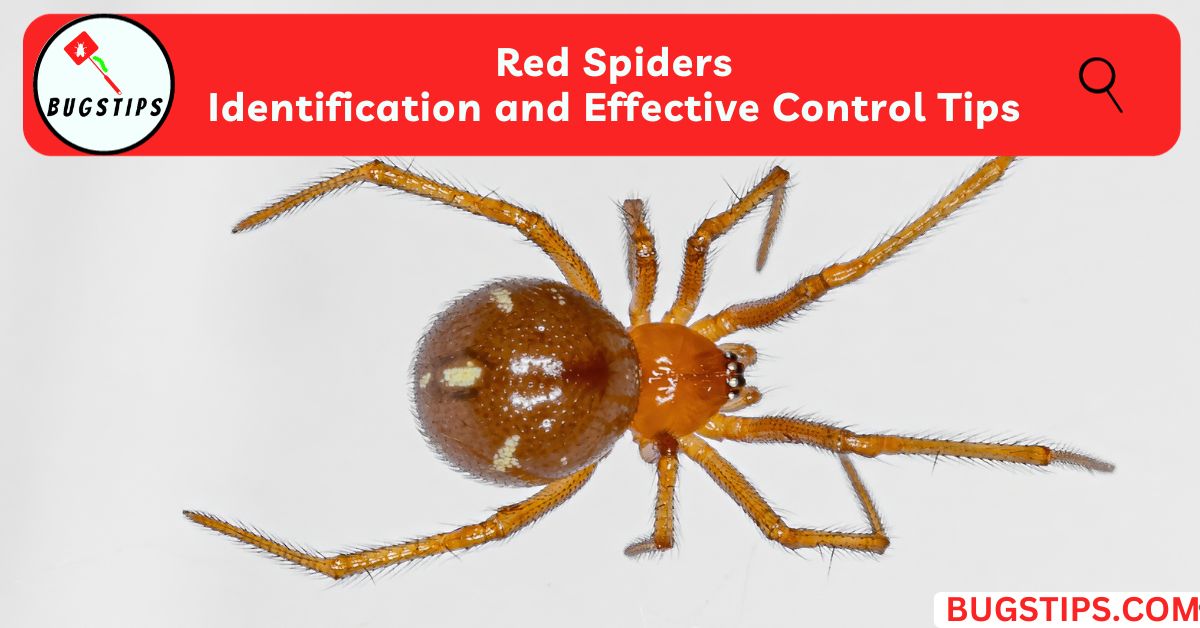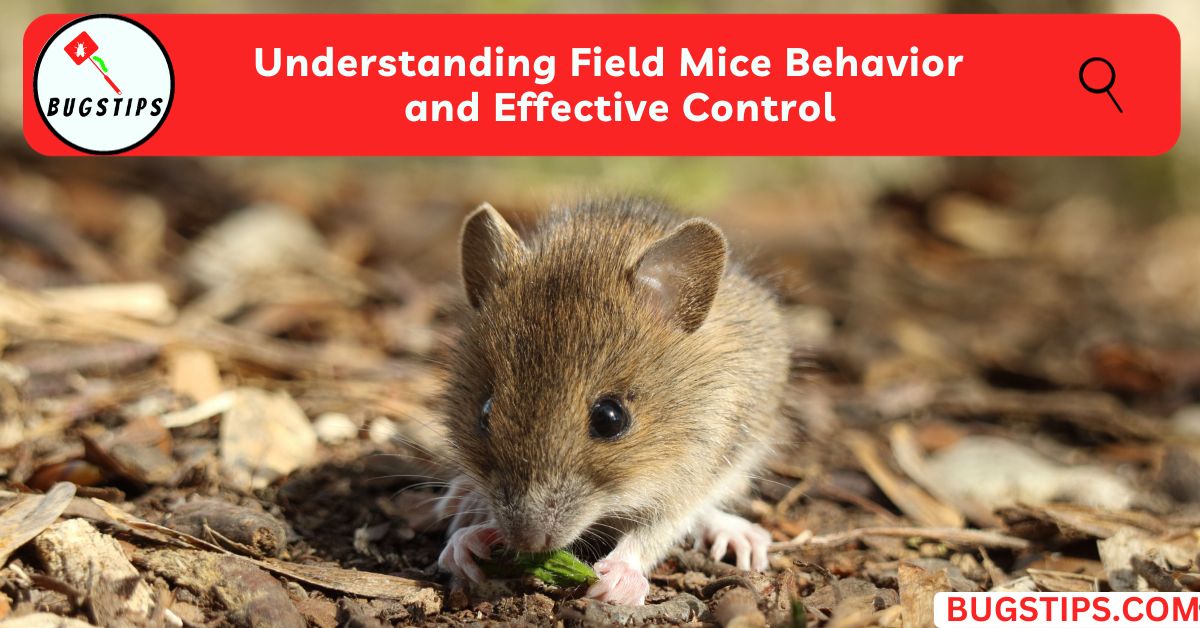This post may contain affiliate links which means as an Amazon Associate, this site may earn a small commission on qualified purchases made through links at no extra cost to you. Learn more on Affiliate Disclosure
Are you familiar with the sight of flying cockroaches? These pests are a common occurrence in many parts of the world, and they can be quite unsettling to encounter. While most cockroaches are known for their ability to scurry across floors and walls, some species of cockroaches are capable of flying short distances.
In this article, we will explore the topic of flying cockroaches in depth. We’ll discuss what causes cockroaches to fly, the different species of cockroaches that have this ability, and how to identify them. Additionally, we’ll explore the behavior and biology of these pests.
Whether you’re dealing with a current infestation or just want to learn more about these fascinating (and sometimes terrifying) insects, our guide to flying cockroaches will provide you with the information you need. So sit back and keep reading!
Flying Cockroaches: What They Are and How They Look
Not all cockroaches can fly, but some species like the American, Australian, and smoky brown cockroaches can.
Flying cockroaches look different from non-flying ones. They’re usually bigger and have a more streamlined body shape that’s better for flying. Their wings are longer and more developed, which helps them take off and fly short distances.
Flying cockroaches come in different sizes and colors depending on the type. They’re usually brown or black with long antennae and wings that can be clear or dark.
Although flying cockroaches might give you the creeps, they’re not really dangerous to humans. But they can carry harmful bacteria and allergens that can cause health problems. So, it’s important to take steps to prevent them from infesting your home.
In the next section, we’ll take a closer look at the biology of flying cockroaches, including their behavior, where they live, and the different types of species out there.
Types of Flying Cockroaches
Flying cockroaches are a diverse group of insects that come in several different species. Each of these species has its own unique characteristics and behaviors. here we will explore some of the most common types of flying cockroaches.
American Cockroach: (Periplaneta americana)
The American cockroach is one of the most common species of flying cockroach. They are usually reddish-brown in color and can grow up to 2 inches in length. American cockroaches prefer warm and humid environments, and can often be found in sewers, basements, and other damp areas. They are known for their ability to fly short distances, especially when disturbed.
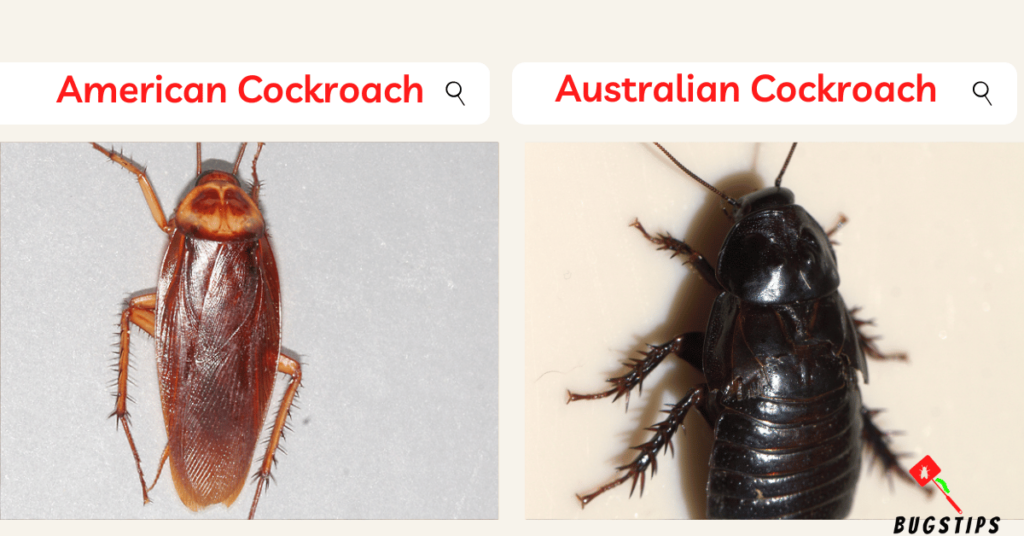
Australian Cockroach: (Periplaneta australasiae)
The Australian cockroach is another species of flying cockroach that is commonly found in warm and humid regions. They are usually brown in color and can grow up to 1.5 inches in length. Unlike other species of cockroaches, the Australian cockroach is attracted to light and can often be found near windows and light fixtures.
Smoky Brown Cockroach: (Periplaneta fuliginosa)
The smoky brown cockroach is a large species of flying cockroach that is often found in the southern United States. They are usually dark brown or black in color and can grow up to 1.5 inches in length. Smoky brown cockroaches prefer warm and humid environments and can often be found in attics, crawl spaces, and other dark areas.
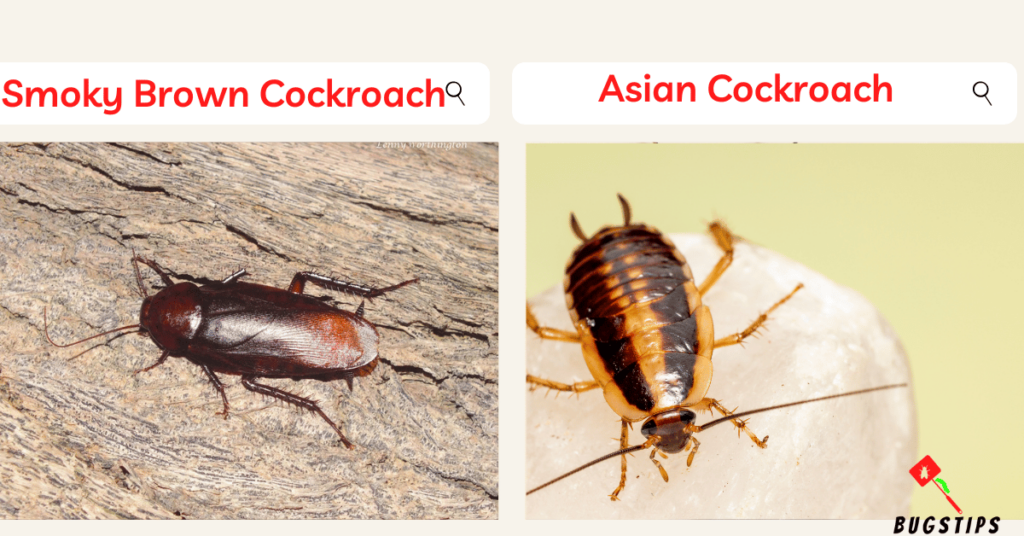
Asian Cockroach: (Blattella asahinai)
The Asian cockroach is a smaller species of flying cockroach that is often mistaken for the German cockroach. They are usually light brown in color and can grow up to 1 inch in length. Asian cockroaches prefer outdoor environments and can often be found in gardens, mulch beds, and other areas with high moisture levels.
Brown-Banded Cockroach: (Supella longipalpa)
The brown-banded cockroach is a smaller species of flying cockroach that is often found in homes and other indoor environments. They are usually light brown in color and can grow up to 0.5 inches in length. Brown-banded cockroaches prefer warm and dry environments and can often be found in attics, closets, and other areas with low moisture levels.

Cuban Cockroach: (Panchlora nivea)
The Cuban cockroach is just one of many types of flying cockroaches that can be found around the world. These pests are known for their ability to fly, which allows them to easily navigate their environment and find sources of food and shelter. While the Cuban cockroach is known for its distinctive green color, other species of flying cockroaches come in a range of colors and sizes.
Pennsylvania Wood Cockroach: (Parcoblatta pensylvanica)
The Pennsylvania wood cockroach (Parcoblatta pennsylvanica) is a species of cockroach that is commonly found in wooded areas throughout the eastern United States. While they are capable of flight, they are not considered a major pest and do not usually infest human living spaces.
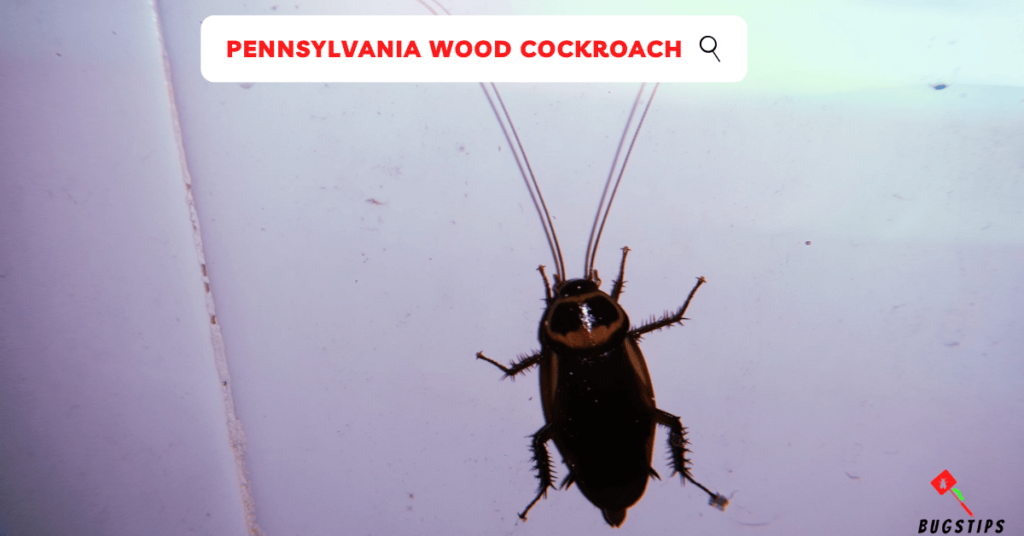
They are generally outdoor insects that feed on decaying organic matter and can be found under leaves, logs, and other forest debris. The Pennsylvania wood cockroach is brown in color and can grow up to around 3 centimeters in length. They have a flattened body shape and long antennae, which they use to navigate their environment and find food.
Each of these species has its own unique characteristics and habits. so It’s important to note that not all cockroaches can fly, and even those that can not do so very often.
The Biology of Flying Cockroaches
Cockroaches are known for their ability to adapt to a wide variety of environments and their flying abilities are just one example of this. In this section, we’ll take a closer look at the biology of flying cockroaches and explore some of the key factors that play a role in their ability to take to the skies.
Do Cockroaches Have Wings?
Yes, many species of cockroaches have wings. However, not all species are capable of flying. Some species have wings that are too small or underdeveloped to allow for flight, while others may have wings that are used for gliding or other purposes.
Why Do Cockroaches Fly?
Cockroaches fly for a variety of reasons. One of the main reasons is to escape danger or threats. When they feel threatened or disturbed, they may take to the air to get away from the source of the danger. They may also fly in search of food or to find a mate during the breeding season.
How High Can They Fly?
Cockroaches are not capable of flying very high. Most species can only fly a few feet off the ground at most. However, this is usually enough to allow them to escape danger or navigate their environment.
Life Cycle of Flying Cockroaches
The life cycle of flying cockroaches is a fascinating process that involves several stages of growth and development. Understanding this life cycle can help us to better understand how these insects survive and thrive in a wide range of environments.
The first stage of the life cycle is the egg. Female cockroaches lay their eggs in protected areas such as cracks and crevices, and the eggs hatch after a few weeks. The nymphs that emerge from the eggs are small, wingless, and look very different from the adult cockroach.
Over the next several months, the nymphs will molt several times, shedding their exoskeletons and growing larger and more developed with each molt. During this stage, the nymphs are vulnerable to predators and other threats, and many do not survive until adulthood.
Once the nymphs reach maturity, they develop wings and become capable of flight. The adult cockroach is now able to breed and lay eggs of its own, beginning the life cycle anew.
Depending on the species, the life cycle of a flying cockroach can take anywhere from a few months to several years. Some species are able to produce multiple generations over the course of a year, while others have longer life cycles and produce fewer offspring.
One of the key factors that allow flying cockroaches to thrive is their ability to adapt to a wide range of environments. They are able to survive in both indoor and outdoor environments and can tolerate a variety of different temperatures and humidity levels.
The life cycle of flying cockroaches is a complex and fascinating process that allows these insects to survive and thrive in a wide range of environments. While they may be a nuisance for homeowners, understanding their biology and behavior can help us to better prevent and control infestations.
You’ll Also Like – Can Cockroaches Have Rabies?
Habitat and Behavior of Flying Cockroaches
Flying cockroaches can be found in many different environments, including urban areas, forests, and even deserts. They are especially common in warm, moist climates, although some species can survive in colder environments as well.
Where Do Flying Cockroaches Come From?
Flying cockroaches can be found all over the world, but they are more common in warmer climates. They are attracted to areas with food and water, which is why they are often found in kitchens and bathrooms.
In terms of their origins, flying cockroaches are native to different parts of the world depending on the species. For example, the American cockroach is originally from Africa but has spread to other parts of the world, including North America. The Australian cockroach, on the other hand, is native to Australia but has also spread to other parts of the world, such as the United States.
In general, flying cockroaches thrive in warm, humid environments, so they are more common in tropical and subtropical regions. However, they can also survive in other climates, as long as they have access to food and water.
What Attracts Flying Cockroaches?
As we explained before flying cockroaches are attracted to a variety of things, but the main thing that draws them in is food. They are particularly attracted to sweet and starchy foods, as well as meats and fats. They are also drawn to food scraps and crumbs, so it’s important to keep your kitchen and dining areas clean and free of any food debris.
Another thing that attracts flying cockroaches is water. They need a source of water to survive, so they are often found in damp areas such as bathrooms, laundry rooms, and basements. Leaky pipes and faucets can provide a constant source of water, making them even more attractive to these bugs.
And also flying cockroaches are attracted to warm, humid environments. They prefer temperatures between 70 and 80 degrees Fahrenheit and high humidity levels. They are more common in tropical and subtropical regions, but can also survive in other climates as long as they have access to the right conditions.
Where Do Flying Cockroaches Live?
Flying cockroaches can live in a wide range of environments, including both indoor and outdoor spaces. They are a common pest found in many parts of the world, and their ability to fly allows them to easily navigate their environment and find sources of food and shelter.
Indoors, flying cockroaches are commonly found in damp areas such as basements, crawl spaces, and sewers. They are attracted to areas with high humidity, such as bathrooms and laundry rooms. Flying cockroaches are also drawn to areas with food debris, such as kitchens and dining areas, as well as areas with warmth and shelter. They can even be found in areas with electronics because the warmth generated by the devices is attractive to them.
Outdoors, and flying cockroaches can be found in gardens, mulch beds, and other areas with high moisture levels. They are attracted to areas with decaying organic matter, such as compost piles and piles of leaves, which provide a source of food and shelter.
Do Flying Cockroaches Pose a Danger to Humans?
Flying cockroaches may give people the heebie-jeebies, but are they actually dangerous? In short, they can be. While they don’t bite or sting like other pests, flying cockroaches can carry harmful bacteria and allergens that can cause health problems for humans.
One of the main concerns with flying cockroaches is their ability to spread diseases like salmonella and E. coli. They can pick up these bacteria while crawling through garbage or other unsanitary areas and then transfer them to surfaces in your home, such as countertops or dishes. If you consume food or drink that has come into contact with these bacteria, you could become sick.
In addition to carrying harmful bacteria, flying cockroaches can also trigger asthma symptoms in some people. Their waste and shed skin contain allergens that can cause respiratory problems for those with asthma or allergies.
So It’s important to take steps to prevent an infestation of flying cockroaches in your home. Keep your living spaces clean and free of clutter, seal up any cracks or gaps in your walls or windows, and eliminate sources of moisture and food debris. If you do encounter flying cockroaches in your home, it’s best to contact a pest control professional to handle the problem safely and effectively
Why Do Cockroaches Fly Towards You?
It can be quite unnerving when a cockroach takes flight and heads straight toward you. But why do they do that? Well, there are a few reasons.
Firstly, flying cockroaches are often attracted to sources of light, and if you happen to be standing in a well-lit area, they may mistake you for a potential source of food or shelter. Additionally, cockroaches have a natural instinct to seek out warm, dark places to hide, and your body heat can be attractive to them.
Another reason could be that you inadvertently disturbed their hiding place, and they are simply trying to escape. Cockroaches are notoriously fast runners and can navigate their environment quickly, but flying allows them to cover greater distances in a shorter amount of time.
It’s important to note that flying cockroaches are not aggressive and are unlikely to intentionally fly toward a person to attack them. However, they can still pose a health risk due to the bacteria and allergens they carry, so it’s best to avoid contact with them whenever possible.
What to Do if You See a Flying Cockroach?
If you happen to see a flying cockroach, the first thing to do is to stay calm. Even though it may be alarming, remember that they are just insects and can be dealt with. Avoid swatting or hitting the cockroach as this may cause it to fly towards you or scatter, making it harder to catch.
Instead, try to contain the cockroach by placing a cup or a jar over it. This will prevent it from flying away and give you time to figure out your next steps. You can then slide a piece of paper under the cup or jar to trap the cockroach inside.
If you are uncomfortable handling the cockroach yourself, you can contact a professional pest control service to take care of it for you. It's always a good idea to seal any cracks or openings in your home to prevent more cockroaches from entering.
Remember to keep your living spaces clean and free of food debris, as this can attract flying cockroaches. Keep your food stored in airtight containers and dispose of any trash promptly. By following these tips, you can help prevent future encounters with flying cockroaches.
Final Thoughts
There are many types of cockroaches out there, but only a few have the ability to fly. Flying cockroaches, such as the American, Asian, Cuban, and Pennsylvania wood cockroach, are a common pest in many parts of the world. They are attracted to areas with high humidity and food debris, and while they are not inherently dangerous to humans, they can carry harmful bacteria and allergens.
If you see a flying cockroach, it’s important to remain calm and take appropriate action to remove it from your living space, so be sure to keep your home clean and dry, and seal any potential entry points. By taking these steps, you can reduce the likelihood of encountering these flying insects and keep your home safe and comfortable.
FAQs
Do cockroaches have wings?
Yes, some species of cockroaches have wings. However, not all cockroaches are capable of flight. There are both flying and non-flying species of cockroaches.
What does it mean when roaches are flying?
When cockroaches are flying, it usually means that they are searching for food or trying to find a mate. It can also mean that they are trying to escape from danger or unfavorable conditions.
When do cockroaches start flying?
Cockroaches typically start flying when they reach adulthood. This is usually when they have fully developed wings and are ready to search for food and mates.
Can female cockroaches fly?
Yes, both male and female cockroaches are capable of flight. However, some species of cockroaches, such as the German cockroach, are more likely to glide than to fly.
Can baby cockroaches fly?
No, baby cockroaches (also known as nymphs) are not able to fly. They are too young and underdeveloped to have fully formed wings.
Why do cockroaches fly toward me?
Cockroaches may fly toward humans if they are attracted to the warmth and carbon dioxide that our bodies emit. They may also mistake us for a potential food source or a place to hide.
Can cockroaches fly in the UK/Canada?
Yes, there are species of cockroaches that are capable of flying in both the UK and Canada. However, not all species found in these countries are capable of flight.
Do flying cockroaches bite?
No, flying cockroaches do not typically bite humans. They are more likely to try to avoid us altogether.
Do cockroaches fly or jump?
Cockroaches fly by gliding through the air, rather than jumping. However, some species are capable of jumping short distances.
How high can cockroaches fly?
Cockroaches are not able to fly very high. They typically only fly a few feet off the ground, at most.
Can Madagascar hissing cockroaches fly?
No, Madagascar hissing cockroaches are not capable of flight. They have wings, but they are vestigial and cannot be used for flying.
Can Oriental cockroaches fly?
Oriental cockroaches are capable of gliding short distances, but they are not strong flyers. They are more likely to crawl than to fly.
How can I tell if I have a flying cockroach infestation?
If you notice cockroaches flying around your home or property, it may be a sign of a flying cockroach infestation. Other signs may include the presence of cockroach feces or egg cases, as well as a musty odor. If you suspect that you have a cockroach infestation, it’s best to contact a pest control professional for assistance.
Resources – (for further reading)
University of Florida – American cockroach – Periplaneta americana (Linnaeus)
University of Florida – Australian cockroach – Periplaneta australasiae
Wikipedia – Smokybrown cockroach , Pennsylvania wood cockroach , Panchlora nivea
UF IFAS Extension – Asian Cockroach
Texas A&M: AgriLife Extension – Cockroaches in the Texas Landscape

